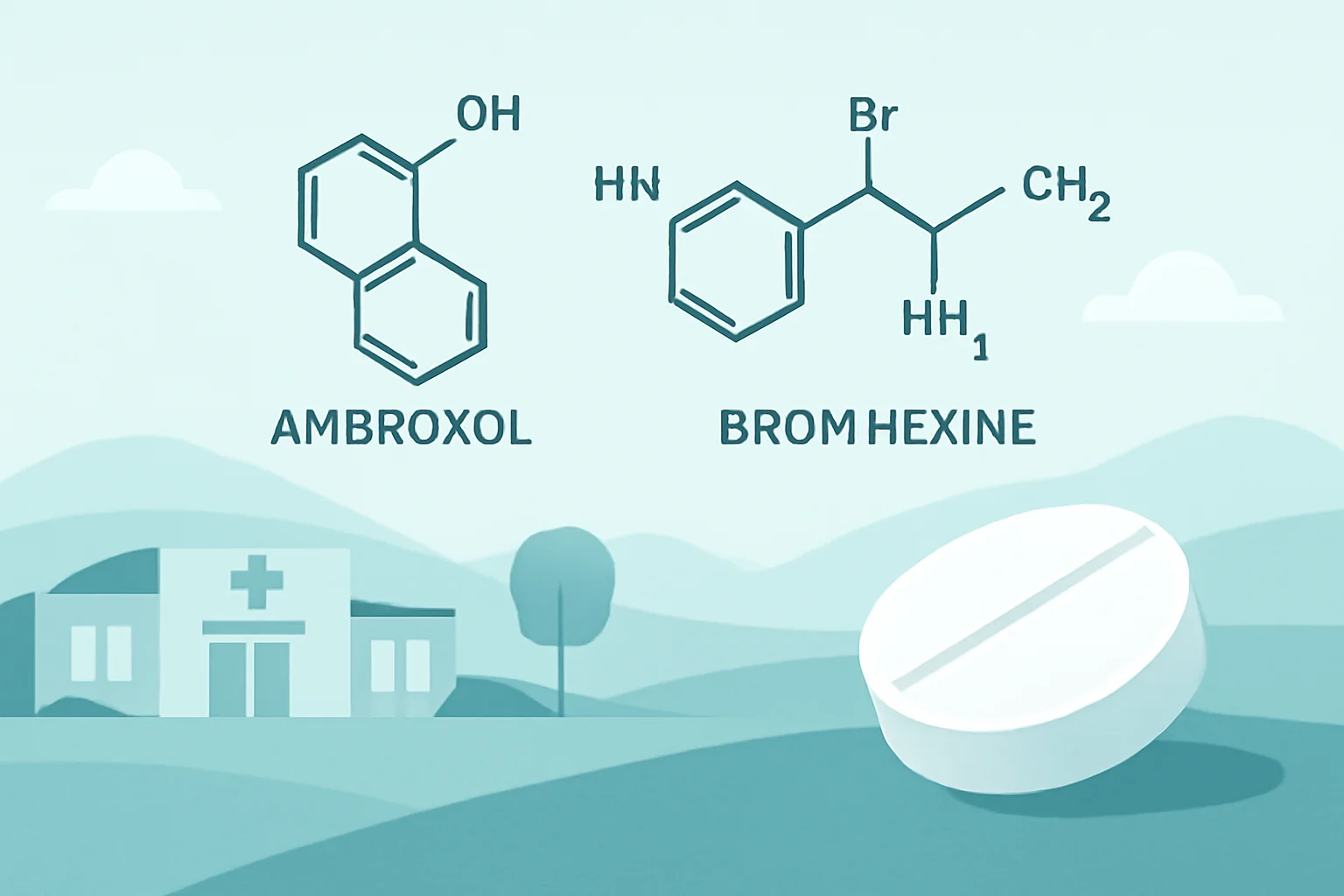
Ambroxol or bromhexine: Which is the more effective cough suppressant?
A wide range of medications is available for the treatment of respiratory diseases, among which expectorants play a prominent role. These preparations help clear the airways by removing mucus, thereby facilitating breathing and reducing cough symptoms. Two popular expectorant active ingredients, ambroxol and bromhexine, may be familiar to many, but the question often arises as to which is more effective, or whether there is a difference between the two. People often seek solutions for respiratory complaints but may not always know what type of medication to choose.
There are several similarities and differences between the two active ingredients that can influence the choice. Furthermore, the active ingredients are available in different forms, such as tablets, syrups, or inhalers, which can also be an important consideration for users. Below, we will take a closer look at the characteristics, mechanisms of action, applications, and potential side effects of ambroxol and bromhexine to help make the right decision.
The Effects and Applications of Ambroxol
Ambroxol is a well-known expectorant used for the treatment of various respiratory diseases. Based on its mechanism of action, it is classified as a mucolytic drug, meaning it helps to thin mucus, thus facilitating the clearance of the airways. Ambroxol stimulates the bronchial mucosa, thereby increasing mucus production and promoting its expulsion.
The use of ambroxol is widespread, as it effectively helps with coughs, asthma, bronchitis, and other respiratory diseases. It is often recommended as an adjunct treatment for chronic obstructive pulmonary disease (COPD) and pneumonia. Ambroxol is available in various forms, allowing patients to easily find the most suitable preparation for themselves—be it syrup, tablet, or inhalation solution.
The advantage of this active ingredient is that it not only has an expectorant effect but also possesses anti-inflammatory and analgesic properties. Therefore, many experience that, in addition to alleviating cough, respiratory irritations are also reduced. When taking ambroxol, it is important to pay attention to adequate fluid intake, as increasing hydration aids in mucus removal.
Although ambroxol is generally well tolerated, side effects may occur, such as gastrointestinal discomfort, headaches, or allergic reactions. Therefore, it is always advisable to consult a doctor before starting its use, especially if someone is also taking other medications.
The Characteristics and Mechanism of Action of Bromhexine
Bromhexine is another popular expectorant that works similarly to ambroxol but has a different chemical structure. Bromhexine is a mucolytic agent that also focuses on thinning and removing mucus. This active ingredient also stimulates the respiratory tract’s mucosa, thereby promoting mucus production and expectoration.
The application of bromhexine is extensive, as it is often used for respiratory diseases such as bronchitis, pneumonia, and asthma. Bromhexine is available in syrup, tablet, and inhalation solution forms, providing a convenient and effective solution for patients. The inhalation form may be particularly advantageous, as it can have a faster effect when delivered directly to the airways.
The advantage of bromhexine is that it is not only suitable for alleviating cough but also has anti-inflammatory effects. Additionally, it may help protect the lungs due to its antioxidant properties. It is important to mention that adequate fluid intake is also essential when taking bromhexine, as hydration helps facilitate easier mucus removal.
The side effects of bromhexine are generally mild, but gastrointestinal discomfort, skin rashes, or allergic reactions may occur. As with any medication, it is advisable to seek medical advice before starting its use, especially when combining it with other medications.
Ambroxol or Bromhexine: Which One to Choose?
The question of whether to choose ambroxol or bromhexine is important for many, and the decision depends on several factors. Both medications are effective expectorants but have different mechanisms of action, modes of application, and side effects.
When making a choice, it is important to consider the severity of symptoms, the type of illness, as well as the patient’s age and overall health condition. Ambroxol acts more quickly, and many prefer the syrup or inhalation form, as inhalation is rapidly absorbed in the airways. In contrast, bromhexine’s long-lasting effect may be advantageous in chronic conditions.
It is important to mention that doctors generally adopt an individualized approach, taking into account the patient’s condition and previous treatments to select the most appropriate medication. If someone has already used a specific medication and found it effective, it is worth continuing that, while if not, it may be advisable to switch based on the doctor’s recommendation.
Medical consultation is particularly important, as various causes may underlie respiratory diseases, and a precise diagnosis is necessary to choose the appropriate treatment. The doctor can assist in choosing between the two medications, considering the patient’s condition, any potential allergies to the medication, and the best treatment options.
Although both ambroxol and bromhexine are highly effective expectorants, it is always advisable to seek medical advice to make the right decision.
**Warning:** This article does not constitute medical advice. If you have a health problem, be sure to consult your doctor.

